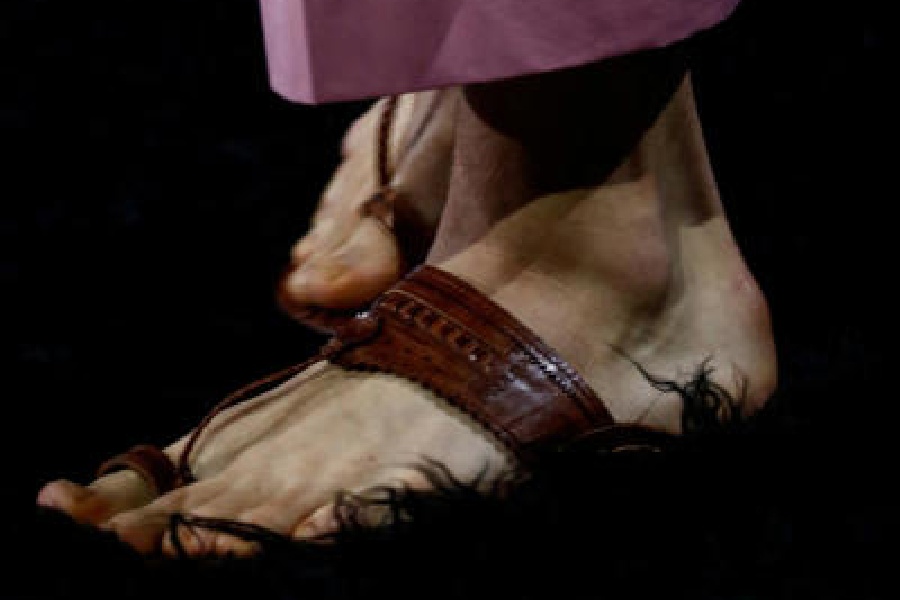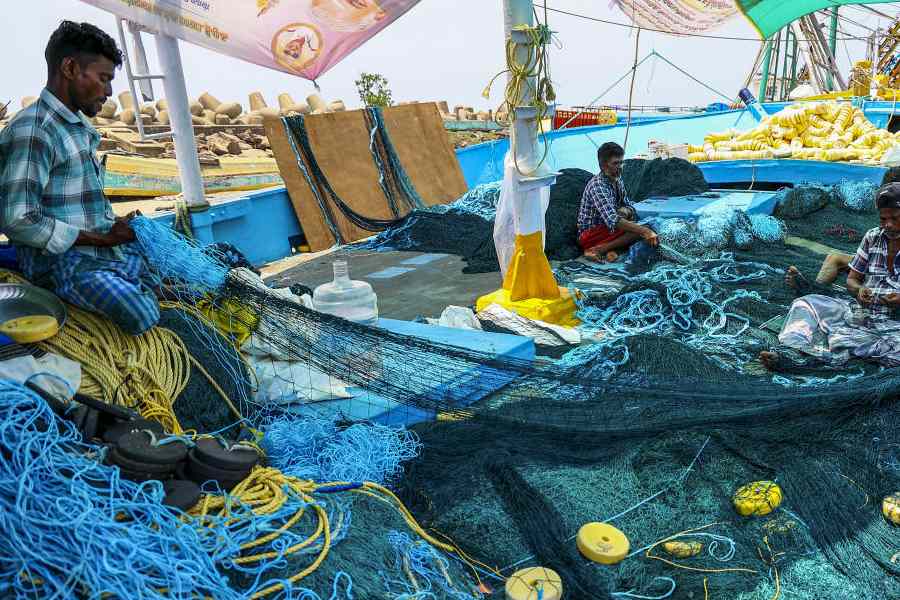Kasturi Banerjee says alcohol’s “always fascinated” her – and not just the drinking part. She spent 16 years as a banker at Standard Chartered but now, in a novel twist, she’s leading a Goa distillery startup that crafts sassy white and mellow gold rums. She’s one of a new ambitious breed of distillers who are betting India’s ready for a “rum revolution.”
While whiskey has been the Indian alcohol market king, the legendary Old Monk ruled over the rum segment. But rum’s always been seen as a non-premium spirit that required a mixer. Now, the smaller players are attempting to get Indians to put aside their whiskey and sip on new standout rums that can be used in cocktails or drunk neat – but definitely not be mixed with Coca Cola.
Banerjee’s 13-person company, Stilldistilling Spirits, is selling her Maka Zai white and gold rums in Goa, Karnataka, Maharashtra, Pondicherry, and she’s just launched in Haryana. (The name Maka Zai means “I want” in Konkani. Says Banerjee, who qualified as a bartender before becoming a distiller, says “every aspect of the alcohol world – from drinking, collecting to sharing – has always fascinated me.” Her company’s name, Stilldistilling, reflects a belief that “there’s no such thing as perfection in distilling. It’s an ongoing process,” she says.
Another of the players who’s entered the artisanal rum market is Shrikant Hajare. His family owns one of India’s biggest sugar factories and they’re also the largest ethanol producer. For Hajare, it was a logical next step to make single-estate rum. So now there’s Ugar Classic, Blanco and Spice. (Ugar happens to be a small village in Belgaum district, Karnataka, where the sugar, ethanol and rum are all produced). For good measure, Hajare’s making a single malt also called Ugar. Hajare’s worked with liquor giants like Pernod Ricard, Diageo and Louis Vuitton so he’s got strong industry experience to back his entrance into upmarket branded liquor. Says Hajare: “We grow seeds, we grow sugarcane. Then we make the spirit and the rum – it’s a natural progression. Also, all the flavours, even the colour, come from the matured alcohol. That’s the beauty of the rum.”
Like the Caribbean which grows sugarcane and makes world-famous rums, India could also put itself on the global map with its rums, these distillers believe. India’s “a major sugarcane producer so we’ve got the molasses to make rum along with the right soil and climate,” Banerjee notes.
One company that made an early effort to build a market for high-quality rum is Bangalore-based Amrut which launched its Two Indies golden amber rum – a fusion of aged Caribbean rum and locally distilled rum made in Bangalore – several years ago. But it’s now brought out a silky dark rum after launching a white rum in 2023. Amrut Distilleries managing director Rakshit Jagdale reckons Indians are developing a taste for high quality rum and growth is on the cards. Says Jagdale: “The rum category is growing at 6-to-7 per cent annually. But the premium rum category is growing by double digits. The Indian rum market is valued at $2.1 billion and is projected to reach $3.5 billion by 2031, according to Straits Research.
Other smaller players are also looking to grab part of the premium rum segment. Look at Goa-based Adinco Distillery which produces Alejandro that it describes as a “crafted, small-batch, dark rum”. It’s also toasted Goan red rice and infused the flavour into a neutral spirit.
Ugar has much greater ambitions. While it’s currently making its own whiskey, Hajare says the company is weighing whether it should look at producing seven-eight brands of rum. “We’re thinking seriously about this. We’re looking at whether we should be only a rum manufacturer and bring out different rum brands of rum at various price points.”
He adds: "We could collaborate with other manufacturers around the world. We could maybe get a Venezuelan rum to India and then do a blend or maybe a West Indian or Caribbean rum or even a Mauritian one.”
Banerjee, who produces the only 100 per cent locally made rum, believes there’s ample scope to produce rum totally made in India. “We’ve got an abundance of sugar cane. There’s a wide space for a luxury product or premiumisation of the alcohol. And it’s not just that. Across the globe, every country in the same latitude and same climate makes great rum. You’ve got the Caribbean, South American, Southeast Asian rums Thailand, Cambodia, Vietnam, Japan have fantastic rums. Philippines has one of the highest-selling rums in the world.”
Other new manufacturers striking out in different directions include Lalit Kalani. His family was in the liquor business for several decades but then Lalit’s father sold his interests. Lalit moved to the US to study and stayed on, working in the food industry. He returned to Mumbai because his company posted him here. But then he began eyeing the liquor segment again and despite his father’s reservations got back into the market.
Kalani started by launching white and spiced rums which he called Rock Paper and he’s just begun selling a zesty lemon-flavoured product. He’s also looking at making two other flavoured rums. Kalani believes “the experimenters are definitely leaning towards new flavours. There’s a clear trend of consumers enjoying different flavours,” he says.
The new players are aiming squarely at two types of drinkers. There are younger drinkers who love trying out a a cocktail on a night out. At the other end of the scale is a different type of drinker who only adds a drop or two of water and sips his drink at home or out with friends.
Banerjee reckons her Maza Kai reaches out to both segments. She says: “Our white’s really popular in restaurants for cocktails. Also, there’s a certain younger age experimenting with cocktails. It’s perfect for them.” She adds: “And our gold that’s matured for two-and-a-half years, adding complexity to the flavour is a sipping rum. We tell people not to mix it with anything other than a little water and a cube of ice.” Interestingly, both segments are faring almost equally well. “Our sales reports are both almost similar. It’s like 48-52 per cent,” she says.
Similarly, Sachin Bhamri, who was an executive at Big Banyan wines and Sula, estimates 70 per cent of his Earth rum is drunk at home and 30 per cent in restaurants and bars. Out-of-home sales are very important because “the brand builds only through restaurants and bars. You have to identify places that are the talk of the town,” he says. Then, there’s Pankaj Balachandran who’s an experienced sommelier who heads Third Eye Distillery which makes Short Story white rum and which is now selling in several states.
Many of the newer players have big ambitions but are managing with tiny teams. Banerjee launched her company three years ago and her 13-member staff is selling Maka Zai in four states. Then, there’s Karishma Chandy who brings out Pitbull rum. Chandy, who worked with Diageo and Sula, and her partner, Kalpesh Parekh, are selling Pitbull in Maharashtra, Goa, Daman and Silvassa and are looking to expand to Karnataka.
Both Chandy and her partner have wide experience in the liquor industry (she worked in Diageo and Sula Wines) and they’ve launched by promoting their product online. That’s followed by literally taking a store-by-store approach. Says Chandy: “When we finally went to them, they said, ‘People have already started calling and asking, or coming here and showing us a picture and saying, ‘Do you have this?’ ” She adds: “In the universe of retail stores in Mumbai, Pune and Thane, we managed to hit 80 per cent of them.”
Of course, every rum industry newcomer whether big or small is intensely conscious of the heavy presence of Mohan Meakin’s top-selling Old Monk. But while the Old Monk’s a bar staple, Mohan Meakin also has been bringing out many variants and now has white, spiced and even coffee-flavoured rums.
The traditional Old Monk, though, still rules. It not only has sentimental memories for many older drinkers, it’s far cheaper than the new rums, selling for Rs 300 to Rs 750,depending on state excise rates. All the latest rums to hit the market are much more costly. Rum de Ugar classic and spice sell for Rs 1,800 in Maharashtra and Rs 1,300 in Goa where taxes are much lower. In Goa, Maza Kai White retails for Rs1,100 and the dark rum for Rs1,500.
Reinventing rum for the Indian market not only involves creating new tastes but creating innovative packaging to give the drink a more contemporary, fun look.
Can premium rums muscle into spaces that have exclusively belonged to upmarket whiskies? Bhamri says it’s vital to “break the feeling that rum’s a winter drink.” But Banerjee points out that StillDistilling made a 600-bottle special edition that sold out in a month. And Diniz says he reckons that, “If you have the budget, the sky’s the limit.”











